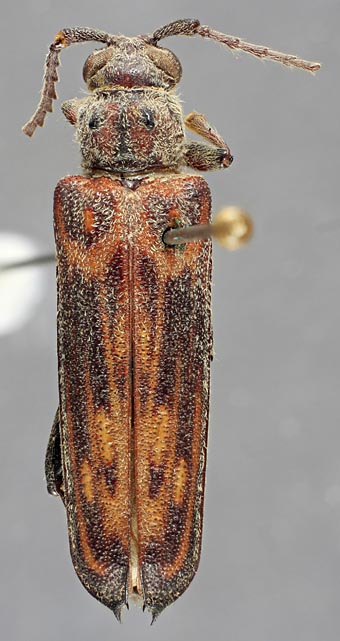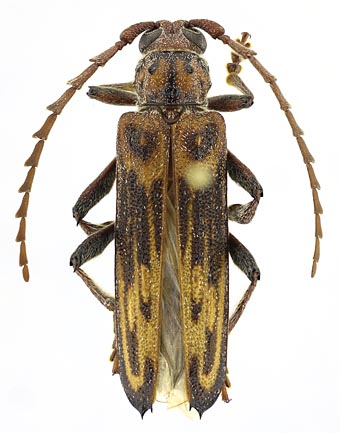|
Diorini Classification
Selected References to Larvae Specimens
|
 Diorus biapiculatus White, 1853; dorsal holotype specimen Cerambycidae:Cerambycinae:Diorini Photograph © E.H. Nearns  Diorus biapiculatus White, 1853; dorsal Cerambycidae:Cerambycinae:Diorini Photograph © A.M. Hodson |

